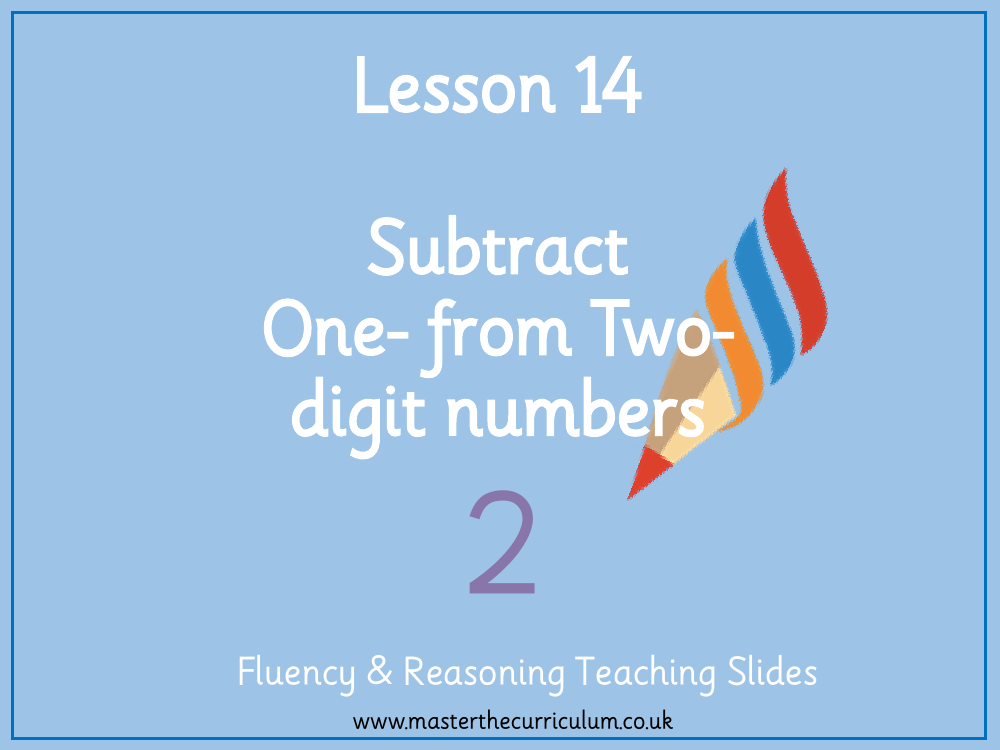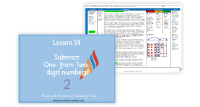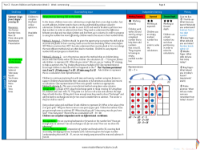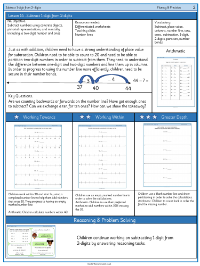Addition and subtraction - Subtract one from two-digit numbers - Presentation

Maths Resource Description
In Lesson 14, the focus is on subtracting a single-digit number from a two-digit number, specifically when the calculation requires crossing a tens boundary. The lesson aims to utilise students' understanding of number bonds to aid in this process. For instance, the class might explore number bonds to 8, discussing what number bonds mean and coming up with three examples. This foundational knowledge is then applied to subtraction problems where students are encouraged to keep the larger number in their head and count back the smaller number. For example, starting from 22 and subtracting 7, students would explore whether there are enough ones to subtract and use a visual aid of counting back on a number line to find the answer.
As the lesson advances, students are introduced to more efficient subtraction methods by partitioning numbers. They learn to break down numbers into parts that can bridge over the ten, such as partitioning 7 into 5 and 2. This strategy is applied to a series of subtraction problems, such as 22 minus 7, and is visually represented on a number line where backward counting is demonstrated. The lesson also incorporates reasoning activities where students compare different methods for efficiency, like comparing Zach's method of counting on from 8 to 24 versus Tia's method of counting back 8 from 24. Independent work further reinforces the concepts, asking students to use number lines and their knowledge of number bonds to solve subtraction problems and to evaluate the efficiency of different methods.



